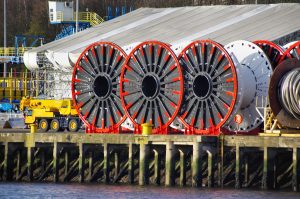In the vast and strategically critical Indo-Pacific region, submarine cables have emerged as a vital yet vulnerable component of global infrastructure. These underwater cables, which span thousands of miles across ocean floors, carry nearly 95 percent of international data, supporting everything from internet traffic to financial transactions. Despite their significance, the security of submarine cables remains a relatively underappreciated aspect of maritime security.
Submarine cables are the lifeblood of global communication. They facilitate the seamless flow of information that underpins modern economies and societies. The Indo-Pacific region, with its dynamic economic growth and strategic importance, relies heavily on these cables for connectivity. Countries like Japan, Australia, and Singapore are major hubs in the global network of submarine cables, making the security of these cables a matter of national interest as well as regional and global concern.
The vulnerability of submarine cables to both natural and man-made threats is a growing issue. Natural threats include seismic activities such as earthquakes and tsunamis, which are frequent in the Indo-Pacific’s “Ring of Fire.” These natural disasters can cause significant damage to underwater infrastructure, leading to disruptions in communication and economic losses.
Man-made threats pose an even more complex challenge. Sabotage, espionage, and accidental damage from shipping activities are significant risks. The intentional cutting or tampering of cables could cripple communication networks, disrupt financial markets, and impede military operations. In the context of rising geopolitical tensions, particularly with China’s increasing assertiveness in the South China Sea and beyond, the risk of state-sponsored sabotage or espionage cannot be ignored.
The Indo-Pacific region’s geopolitical landscape exacerbates the security challenges of submarine cables. China’s maritime expansion and militarization of disputed territories in the South China Sea add layers of complexity to the already fragile security environment. The potential for conflicts over cable routes and landing points is high, as these are strategically significant assets. Control over submarine cables could provide a strategic advantage in terms of intelligence and communication superiority, making them prime targets in any geopolitical conflict.
Despite their critical importance, submarine cables have not received adequate attention in national and regional security frameworks. There is a lack of comprehensive policies and regulations specifically addressing the protection of submarine cables. International law, primarily the United Nations Convention on the Law of the Sea (UNCLOS), provides some provisions for the protection of submarine cables, but these are often insufficient and lack enforcement mechanisms.
Enhancing the security of submarine cables in the Indo-Pacific requires a multifaceted approach. First, there needs to be greater awareness and recognition of the importance of these cables among policymakers and stakeholders. This involves integrating submarine cable security into national security strategies and maritime policies. Countries in the Indo-Pacific should prioritize the protection of submarine cables as critical infrastructure and allocate resources accordingly.
Second, regional cooperation is essential. The Indo-Pacific region is characterized by diverse political systems and varying levels of technological capability, making unilateral efforts insufficient. Collaborative initiatives such as joint patrols, shared surveillance systems, and coordinated response strategies can enhance the overall security of submarine cables. Regional organizations and forums, such as the ASEAN Regional Forum (ARF) and the Quad (comprising the United States, Japan, India, and Australia), can play pivotal roles in fostering cooperation and developing collective security measures.
Third, technological innovation and investment are crucial. Advancements in monitoring and surveillance technologies can significantly improve the ability to detect and respond to threats to submarine cables. Investing in resilient infrastructure, such as redundant cable systems and secure landing points, can mitigate the impact of potential disruptions. Public-private partnerships can also play a significant role, as the private sector owns and operates a substantial portion of the global submarine cable network.
Legal and normative frameworks must be strengthened to protect submarine cables. This includes updating and enforcing international laws to address the specific challenges related to submarine cable security. Establishing clear guidelines for the protection and repair of cables, as well as punitive measures for intentional damage, can provide a deterrent against malicious activities.
Finally, it is essential to foster a culture of information sharing and transparency. Governments, private sector entities, and international organizations should collaborate to share information on threats, vulnerabilities, and best practices. This collective knowledge can enhance the resilience of the global submarine cable network and ensure its continued operation in the face of emerging threats.
Submarine cables are the unsung heroes of the digital age, enabling the connectivity that drives economic growth and societal development. In the Indo-Pacific, their importance cannot be overstated. However, the security of these critical infrastructures is increasingly threatened by natural disasters, geopolitical tensions, and malicious activities. Addressing these challenges requires a comprehensive and cooperative approach, integrating national strategies, regional cooperation, technological innovation, and strengthened legal frameworks. As the Indo-Pacific continues to rise in global prominence, ensuring the security of submarine cables will be paramount to maintaining regional stability and global connectivity.
































